The PCT Gear Guide: Class of 2017 Survey
Check out the most recent PCT Gear Guide here.
In an effort to improve Pacific Crest Trail Thru-hiker Survey, I have continued to expand the questions I ask hikers. This year, I have taken an even deeper dive into finding out what gear hikers used, but more importantly, what gear made hikers successful and what gear hikers wanted to burn or throw in the trash (or throw in the trash and then burn).
I’ve organized the date as best I could, trying to give a comprehensive picture of what gear PCT thru-hikers are using. This post covers the MOST POPULAR GEAR (backpacks, shelters, sleeping bags, sleeping pads, water treatment, stoves, bear canisters), the BASE WEIGHTS of different categories of hikers and how they stack up to one another, the FAVORITE GEAR (same as “most popular”), SHOES, DISLIKED GEAR, NOTES ON GEAR, how much was SPENT ON GEAR, thru-hiker COMMENTS ON GEAR, and finally, a bit of gear ADVICE.
Despite my best efforts, I am sure there are things I missed or things you may want to know about the data, so if anything comes to mind, I would love to hear your thoughts in the form of a comment or email. Also, know that I made a good-faith effort to collect as much data as I could, but that does not mean there’s anything scientific about this post. I did my best to make sure this accurately reflects the data collected from this year’s Pacific Crest Trail class and to remove any obviously bad data.
That being said, I hope you enjoy the PCT Gear Guide brought to you by the PCT Class of 2017.
Note: A list of the different hiker categories and how they are identified can be found at the end of this post.
JUMP TO A SECTION

THE MOST POPULAR PCT GEAR
With the data, we can observe, from a safe distance, what an “average” Pacific Crest Trail hiker’s gear list was this year. We’ll start where we left off in the survey, and review the MOST COMMONLY USED GEAR from this year’s PCT class.
Remember, this is the most commonly used gear – simply because something was the most used does not necessarily translate to it automatically being the “best” (or even good). Further down we look at what gear hikers DID NOT like, so it might be best to read through the entire post before you go crazy with your gear selection.
Note: All the gear in the charts below is listed in order of most common (at the top) to less common (at the bottom).
MOST POPULAR BACKPACK:
The ULA Circuit was the most popular pack for PCT thru-hikers for the second year in a row. It easily fits the BV500 and other bear canisters and carries up to 35 lbs (16 kg) of gear. The satisfaction rating of this pack, according to hikers who used it, was 91%.





| BACKPACK | PRICE | WEIGHT | LITERS | REC MAX LOAD | ACCESS | SATISFACTION |
|---|---|---|---|---|---|---|
| ULA Circuit | $235 | 41 oz / 1.162 kg | 68 | 35 lbs / 16 kg | Top | 91% |
| Osprey Exos | $220 | 38.4 oz / 1.089 kg | 58 | 40 lbs / 18 kg | Top | 88% |
| Hyperlite Mountain Gear Windrider | $340 | 31.08 oz / 881 g | 55 | 40 lbs / 18 kg | Top | 86% |
| Osprey Atmos 65 AG | $260 | 73.28 oz / 2.077 kg | 65 | 45 lbs / 20.5 kg | Top | 86% |
| ULA Catalyst | $260 | 48 oz / 1.361 kg | 75 | 40 lbs / 18 kg | Top | 83% |
MOST POPULAR SHELTER:
The Big Agnes Fly Creek HV UL2 was the most popular shelter for Pacific Crest Trail thru-hikers last year. A lot of hikers also mentioned loving the space of a two-person tent. Something to think about.



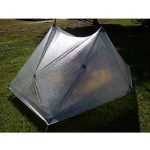

| TENT | PRICE | WEIGHT | PACKED | HEIGHT | FLOOR | DOORS | SATISFACTION |
|---|---|---|---|---|---|---|---|
| Big Agnes Fly Creek HV UL2 | $390 | 32 oz / 879 g | 4 x 19 in / 10 x 48 cm | 40 in / 102 cm | 28 ft² / 2.6 m² | 1 | 86% |
| Big Agnes Copper Spur HV UL1 | $380 | 34 oz / 964 g | 4 x 16.5 in / 10 x 42 cm | 38 in / 97 cm | 20 ft² / 1.9 m² | 1 | 92% |
| Big Agnes Copper Spur HV UL2 | $450 | 44 oz / 1.25 kg | 4 x 19.5 in / 10 x 50cm | 40 in / 102 cm | 29 ft² / 2.7 m² | 2 | 96% |
| Zpacks Duplex | $600 | 21 oz / 595 g | 8 x 14.5 in / 20 x 37 cm | 48 in / 122 cm | 28 ft² / 2.6 m² | 2 | 89% |
| Big Agnes Fly Creek HV UL1 | $350 | 31 oz / 765 g | 4 x 19 in / 10 x 48 cm | 38 in / 97 cm | 20 ft² / 1.8 m² | 1 | 93% |
MOST POPULAR SLEEPING BAG:
The Enlightened Equipment Revelation 20° was the most popular sleeping bag for Pacific Crest Trail thru-hikers last year (and it’s a quilt). This quilt is available as an “off the shelf” model, or is customizable (fill power, length, color) if you want to spend a bit more.


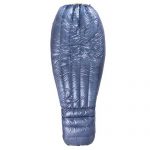


| SLEEPING BAG | PRICE | TEMP | WEIGHT | FILL | FILL WEIGHT | SATISFACTION |
|---|---|---|---|---|---|---|
| Enlightened Equipment Revelation 20° | $285 | 20°F / -7°C | 20.2 oz / 572 g | 850-fill duck down | 13.63 oz / 386 g | 80% |
| Western Mountaineering UltraLite | $500 | 20°F / -7°C | 29 oz / 822 g | 850-fill goose down | 16 oz / 453.6 g | 86% |
| Zpacks 20° Sleeping Bag | $415 | 20°F / -7°C | 20 oz / 568 g | 900-fill goose down | 13.7 oz / 388 g | 67% |
| Marmot Helium | $400 | 15°F / -9°C | 33 oz / 936 g | 800-fill goose down | 19.8 oz / 561 g | 95% |
| REI Igneo 17 | $300 | 17°F / -8°C | 31 oz / 879 g | 800-fill duck down | 15.9 oz / 450 g | 94% |
MOST POPULAR SLEEPING PAD:
For the second year in a row, the Therm-a-Rest NeoAir XLite was the most popular sleeping pad for Pacific Crest Trail thru-hikers this year. In fact, the Therm-a-Rest brand pretty much dominated the entirety of the sleeping pads reported.





| SLEEPING PAD | PRICE | TYPE | WEIGHT | R-VALUE | PACKED | THICKNESS | SATISFACTION |
|---|---|---|---|---|---|---|---|
| Therm-a-Rest NeoAir XLite | $160 | Air pad | 12 oz / 350 g | 3.2 | 9 x 4 in / 23 x 10 cm | 2.5 in / 6.3 cm | 88% |
| Therm-a-Rest Z Lite Sol | $45 | Foam | 14 oz / 410 g | 2.6 | 20 x 5 x 5.5 in / 51 x 13 x 14 cm | .75 in / 2 cm | 93% |
| Therm-a-Rest NeoAir XLite (Short) | $130 | Air | 8 oz / 227 g | 3.2 | 9 x 3.3 in / 23 x 9 cm | 2.5 in / 6.3 cm | 93% |
| Therm-a-Rest Z Lite Sol (Short) | $35 | Foam | 10 oz / 284 g | 2.6 | 20 x 4 x 5.5 in / 51 x 10 x 14 cm | .75 in / 2 cm | 94% |
| Therm-a-Rest NeoAir XTherm | $200 | Air | 15 oz / 430 g | 5.7 | 9 x 4 in / 23 x 10 cm | 2.5 in / 6.3 cm | 100% |
MOST POPULAR STOVE:
The MSR PocketRocket 2 was the most popular stove for Pacific Crest Trail thru-hikers last year. However, 18% of respondents said they went stoveless on the trail (something to keep in mind).





| STOVE | PRICE | TYPE | WEIGHT | DIMENSIONS | INTEGRATED POT | SIMMER CONTROL | SATISFACTION |
|---|---|---|---|---|---|---|---|
| MSR PocketRocket 2 | $45 | Canister | 2.6 oz / 74 g | 7.25 x 5 x 4 in / 18 x 13 x 10 cm | No | Yes | 96% |
| Jetboil MinoMo | $135 | Canister | 14 oz / 397 g | 5 x 6 in | Yes | Yes | 97% |
| Jetboil Flash | $100 | Canister | 15.25 oz / 432 g | 7.1 x 4.5 in | Yes | No | 98% |
| Jetboil Zip | $80 | Canister | 11.75 oz / 333 g | 4.1 x 6.5 in | Yes | No | 88% |
| Snow Peak LiteMax | $60 | Canister | 1.9 oz / 54 g | 3 x 2.7 x 1.3 in / 8 x 7 x 3 cm | No | Yes | 97% |
MOST POPULAR WATER TREATMENT:
The Sawyer Squeeze was the most popular water treatment system for PCT thru-hikers this year (again). Remember, you do not need a treatment for viruses on the PCT (at least that’s the word in the mountains).





| WATER TREATMENT | PRICE | WEIGHT | TYPE | MEDIUM | REMOVES | DIMENSIONS | SATISFACTION |
|---|---|---|---|---|---|---|---|
| Sawyer Squeeze | $40 | 3 oz / 85 g | Squeeze/Straw | Hollow fiber | Protozoa and bacteria | 5 x 2 in | 95% |
| Aquamira | $15 | 3 oz / 85 g | Drops | Chlorine dioxide | Protozoa bacteria, and viruses | N/A | 89% |
| Sawyer MINI | $25 | 2 oz / 57 g | Squeeze/Straw | Hollow fiber | Protozoa and bacteria | 1 x 5 in / 2.5 x 13 cm | 86% |
| Platypus GravityWorks | $110 | 11.5 oz / 326 g | Gravity | Hollow fiber | Protozoa and bacteria | Filter: 3 x 7.4 in / Reservoirs: 19 x 8/13.5 x 7.5 in | 72% |
| Katadyn BeFree | $45 | 2.3 oz / 65 g | Bottle | Hollow fiber | Protozoa and bacteria | 11.3 x 3.5 x 2.8 in / 29 x 9 x 7 cm | 85% |
MOST POPULAR BEAR CANISTER:
The BV500 was the most popular Bear Canister this year. Bear canisters must be carried north of Lone Pine, but most hikers begin carrying them at Kennedy Meadows They can stopped being used at Bridgeport (but must also be carried in Lassen Volcanic National Park).



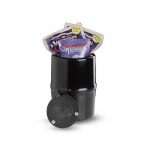

| BEAR CANISTER | PRICE | CAPACITY | WEIGHT | MATERIAL | DIMENSIONS | APPROVED FOR USE ON PCT |
|---|---|---|---|---|---|---|
| BV500 | $80 | 11.5 L | 41 oz / 1.162 kg | Polycarbonate | 12.7 x 8.7 in / 32 x 22 cm | Yes |
| BV450 | $67 | 7.2 L | 33 oz / 935 g | Polycarbonate | 8.7 x 8.3 in / 22 x 21 cm | Yes |
| Berikade Expedition | $350 | 14.7 L | 36 oz / 1.021 kg | Carbon fiber | 14.5 x 9 in / 37 x 23 cm | Yes |
| Garcia Model 812 Backpackers’ Cache | $75 | 10 L | 43 oz / 1.219 kg | ABS polymer | 12 x 8.8 in / 30 x 22 cm | Yes |
| Lighter1 Lil’ Sami | $95 | 5 L | 28 oz / 794 g | Polycarbonate | 7 x 9 in / 18 x 23 cm | Yes |
THE MOST POPULAR GEAR LIST
Knowing what we know now, we can begin to assemble a PCT gear list for this year’s PCT class. Here’s what we’ve got so far:
| ITEM | BRAND/NAME | PRICE | WEIGHT | DESCRIPTION | SATISFACTION |
|---|---|---|---|---|---|
| BACKPACK | ULA Circuit | $235 | 41 oz / 1.162 kg | A 68-liter, top-loading pack built to carry up to 35 lbs / 16 kg. | 91% |
| SHELTER | Big Agnes Fly Creek HV UL2 | $390 | 32 oz / 879 g | A lightweight, two-person, semi-freestanding, front-entry tent. | 86% |
| SLEEPING BAG | Enlightened Equipment Revelation 20° | $285 | 20.2 oz / 572 g | A 20°F / -7°C, 850-fill goose down quilt. | 80% |
| SLEEPING PAD | Therm-a-Rest NeoAir XLite | $160 | 12 oz / 350 g | A lightweight, inflatable, three-season pad – R-value, 3.2. | 88% |
| STOVE | MSR PocketRocket 2 | $45 | 2.6 oz / 74 g | A compact canister stove with simmer control. | 96% |
| WATER TREATMENT | Sawyer Squeeze | $40 | 3 oz / 85 g | An adaptable hollow-fiber filter that removes protozoa, bacteria, and floaties. | 95% |
| BEAR CANISTER | BV500 | $80 | 41 oz / 1.162 kg | An 11.5-liter polycarbonate bear canister approved for use along the PCT. | N/A |
The cumulative retail purchase price of this gear list? $1,235. Yes, being a homeless wanderer of the mountains can be a lot more expensive than most people would imagine. Now, let’s look at something that nobody but hikers, and more specifically thru-hikers, really cares about: how much all this stuff weighs.
- BIG THREE (PACK+SHELTER+SLEEPING BAG): 5 lbs 13.2 oz / 2.644 kg
- BIG FOUR (BIG 3+SLEEPING PAD): 6 lbs 9.2 oz / 2.984 kg
- EVERYTHING (MINUS BEAR CANISTER): 6 lbs 14.2 oz / 3.141 kg
- EVERYTHING (INCLUDING BEAR CANISTER): 9 lbs 9.2 oz / 4.303 kg
Obviously, this is still missing a lot of gear (rain gear, warm jacket, headlamp, extra clothing, and whatever else people throw in their packs. However, it doesn’t get us anywhere close to the AVERAGE STARTING BASE WEIGHT (that is, pack’s weight not including consumables such as food, water, and your poop paper) of this year’s thru-hikers: 19.49 lbs / 8.84 kg.
Let’s take a closer look at hiker base weight now, shall we?
The drop in base weight between the start and end of all our hiker categories tells us something – people are bringing things they don’t need.
It’s also interesting to note that hikers who completed the trail began with a base weight that was, on average, 3.94 lbs / 1.79 kg lighter than hikers who did not finish the trail – that’s nearly 20% lighter. In fact, the average final base weight for hikers who did not finish is still 1.25 lbs / 0.57 kg heavier than the starting base weight of hikers who finished the trail.
In fact, 73% of hikers who reported a starting base weight of over 30 lbs / 13.6 kg did not finish the PCT. Is that not enough random data cherrypicking for you? Well, here’s a bit more!
- 21.12 lbs / 9.58 kg – the average base weight of hikers who got off trail due to injury.
- 0% of hikers with 80+ liter packs finished the trail.
- Only 38% of hikers with a starting base weight above the average finished the trail (vs. 48% overall).
Next, let’s take a look at how base weights compare between people who were thru-hiking their first long-distance trail and those who had already done a long-distance thru-hike.
Just as we saw last year, the data again makes a(n unscientific) case for getting your base weight down. That does NOT mean that you have to have a crazy sub-five-pound (2.3 kg) base weight to finish your thru-hike. No, you don’t even need to have a sub-ten-pound (4.6 kg) base weight. What you need to do is not bring things you don’t need (the cheapest and most effective way to cut your base weight).

Yes, plenty of people can have happy and successful thru-hikes with all ultralight gear. However, people can also have happy and successful thru-hikes with packs much heavier than this arbitrary “average” we’ve managed to arrive at here. Gear selection is a personal issue, and ultimately, if you’re happy to carry something and/or it improves the quality of your hike, then nobody has the right to tell you that you shouldn’t have it.
That being said, if the Pacific Crest Trail is going to be your first stab at a long-distance hike and you fall into the camp of “I have little/no idea what I’m doing/getting myself into”, then there are, of course, strategies to help mitigate your risk of failing to go the distance. One of the best resources reported by this year’s PCT class was former thru-hikers. Well, it turns out that this year’s class has become “former thru-hikers” and a lot of the gear comments are instructing you, future hiker of the PCT, to think long and hard about what gear you want to bring.
Take some time to think about what you NEED on the trail; not what you want, what you need. Don’t say I didn’t try to warn you when you decide to bring extra weight and then end up sending everything home (because some of you will ignore this advice and bring a bunch of unnecessary gear, and if you don’t then I’ve done my job).
THE FAVORITE PCT GEAR
We’ve covered the most common gear from the Pacific Crest Trail this year, but that doesn’t necessarily tell us what gear worked best (or didn’t work at all). That’s why this year I asked hikers whether they were happy with their gear’s performance. No point in doing what everyone else is doing if they’re all doing it wrong, right?
NOTES ON THE DATA:
- I only identified a specific piece of gear as a “favorite” if at least 5% of the hikers in the sample used it (e.g. if four people used Pack X and they all said they liked it, it isn’t fair to just say, without acknowledging the size of the sample, that 100% of hikers liked Pack X). Got it? Good.
- All the weight (and for backpacks, capacity) for all the products below are for the product in a size medium (backpacks) or regular (sleeping bags and pads) unless otherwise noted.
- Some items that missed the 5% mark were liked by all or a large percentage of the hikers who used them. I feel these items still deserve a mention, so I have denoted them with either HM or Honorable mention.
- Some items were very much disliked by hikers (relative to other items) and I have denoted these with DM or Dishonorable mention.
FAVORITE BACKPACK:
The Hyperlite Mountain Gear Southwest was the favorite backpack of PCT thru-hikers this year. 94% of hikers with this pack said they were happy with it (I used it on the CDT this year and I’m one of these hikers as well). Read my detailed review of it here.




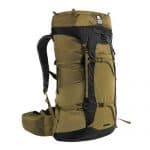
| BACKPACK | PRICE | WEIGHT | LITERS | REC MAX LOAD | ACCESS | SATISFACTION |
|---|---|---|---|---|---|---|
| Hyperlite Mountain Gear Southwest | $340 | 31.08 oz / 881 g | 55 | 40 lbs / 18 kg | Top | 94% |
| Hyperlite Mountain Gear Windrider | $340 | 31.08 oz / 881 g | 55 | 40 lbs / 18 kg | Top | 93% |
| Gossamer Gear Mariposa | $215 | 32.7 oz / 927 g | 60 | 35 lbs / 15.88 kg | Top | 91% |
| ULA Circuit | $235 | 41 oz / 1.162 kg | 68 | 35 lbs / 16 kg | Top | 91% |
| Granite Gear Crown2 | $200 | 35.7 oz / 1.012 kg | 60 | 35 lbs / 16 kg | Top | 91% |
FAVORITE SHELTER:
The Big Agnes Copper Spur HV UL2 took the top spot in the shelter category. It’s a 2-door, dual-vestibule tent that weighs 44 oz / 1.25 kg. It also comes in a more lightweight version (7 oz / 198 g less), the Copper Spur Platinum, that I used on the Continental Divide Trail.





| SHELTER | PRICE | WEIGHT | PACKED | HEIGHT | FLOOR | DOORS | SATISFACTION |
|---|---|---|---|---|---|---|---|
| Big Agnes Copper Spur HV UL2 | $450 | 44 oz / 1.25 kg | 4 x 19.5 in / 10 x 50 cm | 40 in / 102 cm | 29 ft² / 2.7 m² | 2 | 96% |
| Big Agnes Fly Creek HV UL1 | $350 | 31 oz / 765 g | 4 x 19 in / 10 x 48 cm | 38 in / 97 cm | 20 ft² / 1.8 m² | 1 | 93% |
| Big Agnes Copper Spur HV UL1 | $380 | 34 oz / 964 g | 4 x 16.5 in / 10 x 42 cm | 38 in / 97 cm | 20 ft² / 1.9 m² | 2 | 92% |
| REI Quarter Dome 1 | $280 | 39 oz / 1.105 g | 6 x 18.5 in / 15 x 47 cm | 42 in / 106.6 cm | 18.9 ft² / 1.76 m² | 1 | 91% |
| MSR Hubba NX | $350 | 39 oz / 1.106 g | 6 x 18 in / 15 x 46 cm | 36 in / 91.4 | 18 ft² / 1.67 m² | 1 | HONORABLE MENTION |
FAVORITE SLEEPING BAG:
It seems the Marmot Helium was the favorite sleeping bag for Pacific Crest Trail thru-hikers this year). It’s rated down to 15°F / -9°C and weight 33 oz / 936 g (filled with 19.8 oz / 561 g 800-fill goose down).





| SLEEPING BAG | PRICE | TEMP | WEIGHT | FILL | FILL WEIGHT | SATISFACTION |
|---|---|---|---|---|---|---|
| Marmot Helium | $400 | 15°F / -9°C | 33 oz / 936 g | 800-fill goose down | 19.8 oz / 561 g | 95% |
| REI Igneo 17 | $300 | 17°F / -8°C | 31 oz / 879 g | 800-fill duck down | 15.9 oz / 450 g | 94% |
| Western Mountaineering Versalite | $575 | 10°F / -9°C | 32 oz / 907 g | 850-fill goose down | 20 oz / 567 g | 91% |
| Enlightened Equipment Revelation 10° | $285 | 10°F / -9° | 20.2 oz / 572 g | 850-fill goose down | ? | HONORABLE MENTION |
| Feathered Friends Egret UL 20 | $459 | 20°F / -6.67°C | 28 oz / 799 g | 950-fill goose down | 17.3 oz / 491 g | HONORABLE MENTION |
FAVORITE SLEEPING PAD:
For the second year in a row, the Therm-a-Rest NeoAir XLite was the most popular sleeping pad for Pacific Crest Trail thru-hikers this year. In fact, the Therm-a-Rest brand pretty much dominated the entirety of the sleeping pads reported.





| SLEEPING PAD | PRICE | TYPE | WEIGHT | R-VALUE | PACKED | THICKNESS | SATISFACTION |
|---|---|---|---|---|---|---|---|
| Therm-a-Rest NeoAir XTherm | $200 | Air | 15 oz / 430 g | 5.7 | 9 x 4 in / 23 x 10 cm | 2.5 in / 6.3 cm | 100% |
| Exped SynMat HyperLite | $140 | Air | 13.8 oz / 392 g | 2.5 | 72 x 20.5 / 183 x 52 | 2 in / 5 cm | 95% |
| Therm-a-Rest Z Lite Sol (Short) | $35 | Foam | 10 oz / 284 g | 2.6 | 20 x 4 x 5.5 in / 51 x 10 x 14 cm | .75 in / 2 cm | 94% |
| Therm-a-Rest NeoAir XLite (Short) | $130 | Air pad | 8 oz / 227 g | 3.2 | 9 x 3.3 in / 23 x 9 cm | 2.5 in / 6.3 cm | 93% |
| Therm-a-Rest Z Lite Sol | $45 | Foam | 14 oz / 410 g | 2.6 | 20 x 5 x 5.5 in / 51 x 13 x 14 cm | .75 in / 2 cm | 93% |
FAVORITE STOVES, WATER TREATMENT, AND SHOES
FAVORITE STOVES
- Jetboil Flash (98%)
- Jetboil MinoMo (97%)
- Snow Peak LiteMax (97%)
- MSR PocketRocket 2 (96%)
FAVORITE WATER TREATMENT
- Sawyer Squeeze (95%)
- Aquamira (89%)
- HM: SteriPEN Ultra
- DM: Platypus GravityWorks
- Salomon (94%)
- Altra (94%)
- La Sportiva (93%)
- Merrell (91%)
- HM: New Balance
- DM: Brooks
This year, I’ve done a bit of a deeper dive into SHOES. “How many shoes am I going to use on the PCT?” is a question a lot of hikers have before starting their hikes, and it’s also a question that cannot be accurately answered before finishing a hike. Even if you knew for certain that each pair of your shoes would last you 700 mi / 1,125 km, buying yourself four pairs of shoes at the start of the hike would be a risky decision – what if the shoes aren’t as comfortable as you thought? What if your feet swell? What if you die?
Remember, you can buy shoes using this thing called the internet and have them mailed ahead on the trail (to a post office, hotel, local outfitter, trail angel, etc.) once you know that you’re going to need a new pair. And if you encounter an emergency situation, you can always buy locally or simply wait around for your shoes to show up in the mail.
But let’s return to “how many shoes will I use on the PCT.” The average number of pairs used by FINISHERS was 4.03 (σ = 1.15). But what about shoe-specific numbers? Good question. Here are the average number of pairs used by FINISHERS broken down by brand.
PAIRS USED PER BRAND:
- Salomon: 3.72 pairs
- Altra: 4.12 pairs
- La Sportiva: 4 pairs
- Merrell: 3.4 pairs
- DM Brooks: 4.75 pairs
Note: 51% of thru-hikers who finished the PCT were wearing Altras.
MOST POPULAR SHOE:
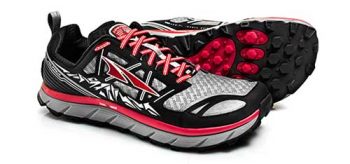
MOST DISLIKED GEAR
That’s great that we know what was popular and what hikers liked, but what about what hikers DIDN’T LIKE? That is, what gear might be best to avoid or at least think about carefully before purchasing?
NOTES ON THE DATA:
- Similar to the favorite gear above, here I only included gear that was used by AT LEAST 5% of hikers.
- To be considered “disliked” a piece of gear needed to have a satisfaction rating of BELOW 75%.
- Some items were very much disliked by hikers (relative to other items) and I have denoted these with DM or Dishonorable mention.
MOST DISLIKED GEAR:
- Zpacks Sleeping Bag (67%)
- Brooks (71%)
- Platypus GravityWorks (72%)
- DM: Enlightened Equipment Revelation 20° (78%)
- DM: ULA Catalyst (83%)
GEAR OBSERVATIONS
Looking through the gear data and the comments left by hikers, a couple of things stood out to me as interesting or repeating. Here’s what I managed to fish out of the spreadsheet:
- For the second year in a row, there were a lot of hikers ANGRY WITH ZPACKS over the quality of their gear.
- As hikes went on, it appears many hikers decided to go STOVELESS (this is exactly what I did at Crater Lake).
- Lots of hikers expressed an interest or desire to move to a TWO-PERSON SHELTER.
- The average bag temperature of hikers who said their sleeping bag was NOT WARM ENOUGH was 22°F / -5.5°C.
- The general consensus is that you should definitely go lighter, but that you need be beware the super ultralight gear trap; sometimes it’s not worth sacrificing durability/functionality/comfort for the sake of a couple more ounces (or grams).
WHERE TO INVEST
So now that we know what was popular, what was liked, and what was disliked, let’s look at where this year’s class spent their AVERAGE OF $1,561 (σ = $912) on gear before beginning their thru-hikes. Here, we’ll also look at the average temperature rating of hiker sleeping bags and how big everyone’s packs were.
As a bonus, I’ve included a look at how these numbers differ between hikers who finished and those who did not finish.
- THRU – AVERAGE AMOUNT SPENT ON GEAR | $1,561 (σ = $912)
- THRU (ON FIRST THRU-HIKE) – AVERAGE AMOUNT SPENT ON GEAR | $1,695 (σ = $964)
- THRU (NOT ON FIRST THRU-HIKE) – AVERAGE AMOUNT SPENT ON GEAR |$1,263 (σ = $744)

- FINISH – AVERAGE AMOUNT SPENT ON GEAR | $1,504 (σ = $848)
- NOFINISH – AVERAGE AMOUNT SPENT ON GEAR |$1,600 (σ = $978)
- THRU – AVERAGE SLEEPING BAG TEMPERATURE RATING | 17.8°F / -7.8°C
- FINISH – AVERAGE SLEEPING BAG TEMPERATURE RATING | 17.5°F / -8°C
- NOFINISH – AVERAGE SLEEPING BAG TEMPERATURE RATING | 18.1°F / -7.7°C
- THRU – AVERAGE BACKPACK SIZE | 57 L (σ = 9.6)
- FINISH – AVERAGE BACKPACK SIZE | 55 L (σ = 9.5)
- NOFINISH – AVERAGE BACKPACK SIZE | 58 L (σ = 9.3)
What’s interesting about this? Hikers who finished had slightly warmer sleeping bags and slightly smaller packs on average. This probably doesn’t mean anything, but what is interesting is that hikers who finished spent an average of $500 LESS on gear than those who did not finish. Looks like you can’t just buy your way to a successful thru-hike.
THRU-HIKER COMMENTS ON GEAR
Hiker comments on gear can be dangerous when looked at individually because like so many things on a thru-hike, what gear you bring (and what gear you ultimately love/hate) is a very personal decision. To give you an idea of what I mean, here are two comments from thru-hikers this year:
- Switched to Altra Lone Peaks. Best move ever.
- Tried the Alta Lone Peak first, but they gave no support and the quality of the soles was really disappointing.

So what are we supposed to believe? Altras are amazing? Altras blow? Personally, I’ve never used Altras so I can’t weigh in on the topic, but I hope you have a good idea of why it’s dangerous to take just one random person’s opinion (especially mine).
Better to just trust A LOT of random people’s opinions.
Fortunately, I have A LOT of data reflecting random people’s opinions which means that we can make some slightly more reliable statements on PCT gear than any single hiker can on their own. Here are some HIKER GEAR COMMENTS that reflect the voice of the majority (or just some gear comments that I found particularly interesting):
- I extended my footprint out so that I had a front porch…I loved it.
- There needs to be a filtering system invented that doesn’t suck balls or take a ton of work.
- It is frustrating to see how much people cared about weight and gear but didn’t know how to use an ice axe or read a river. Outdoor skills should be a bigger focus for the PCT than being ultralight and underprepared.
- I brought 9 lbs / 4 kg of camera gear. Bring what you need to enjoy your hike (and nothing more).
- Get a warm sleeping bag it sucks to have a bad night’s sleep. Try out the backpack it needs to be comfortable Get a warm sleeping bag it sucks to have a bad night’s sleep. Try out your backpack – it needs to be comfortable.
- Lighter is better as long as it still performs. Don’t sweat your choices. Get out and use it before the hike.
- I carried a frisbee golf disc from Shasta south. Worth it.
- Darn Toughs
LAST WORDS OF ADVICE
And finally, a few more concise tips from the PCT Class of 2017 to take into account before your final gear selection:
- Being cold at night sucks.
- Good gear is worth the investment.
- Lighter is better (but don’t compromise on comfort).
- Consider getting a 10°F / -12°C bag (or at the very least a 20°F / -7°C bag).
- Consider the benefits of a two-person tent (aka a palace).
For more on gear, check out my Ultimate Pacific Crest Trail Packing List.

Pacific Crest Trail Survey Collection
Affiliate Disclosure: This page may contain affiliate links, which means I may receive small commissions for purchases made via these links at no additional cost to you. This helps pay the bills and keep the site up and running. Thank you for your support!
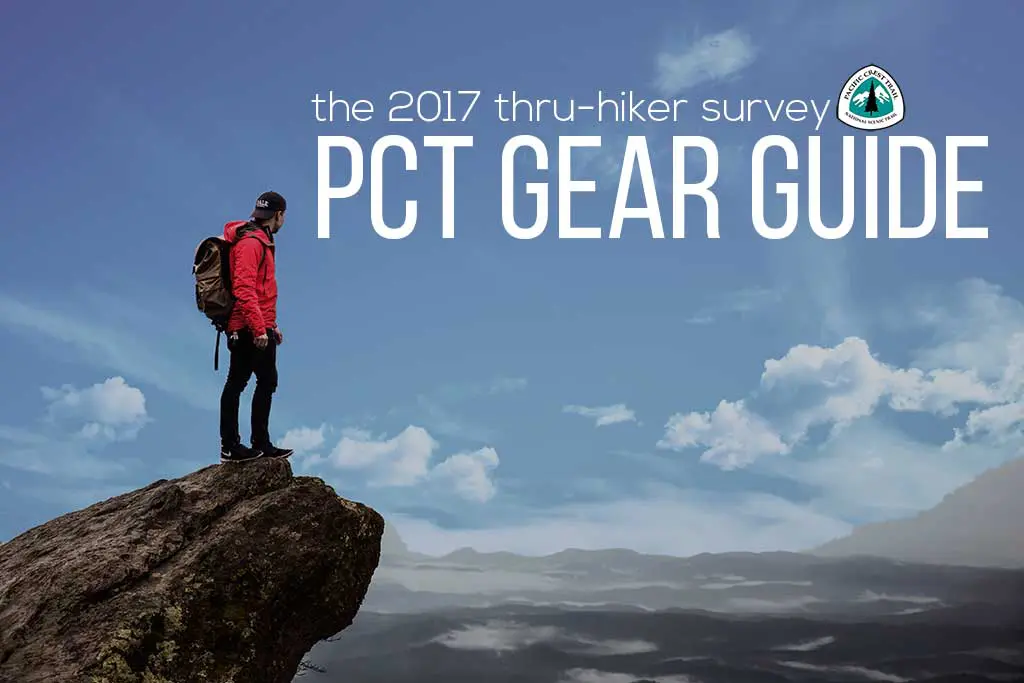
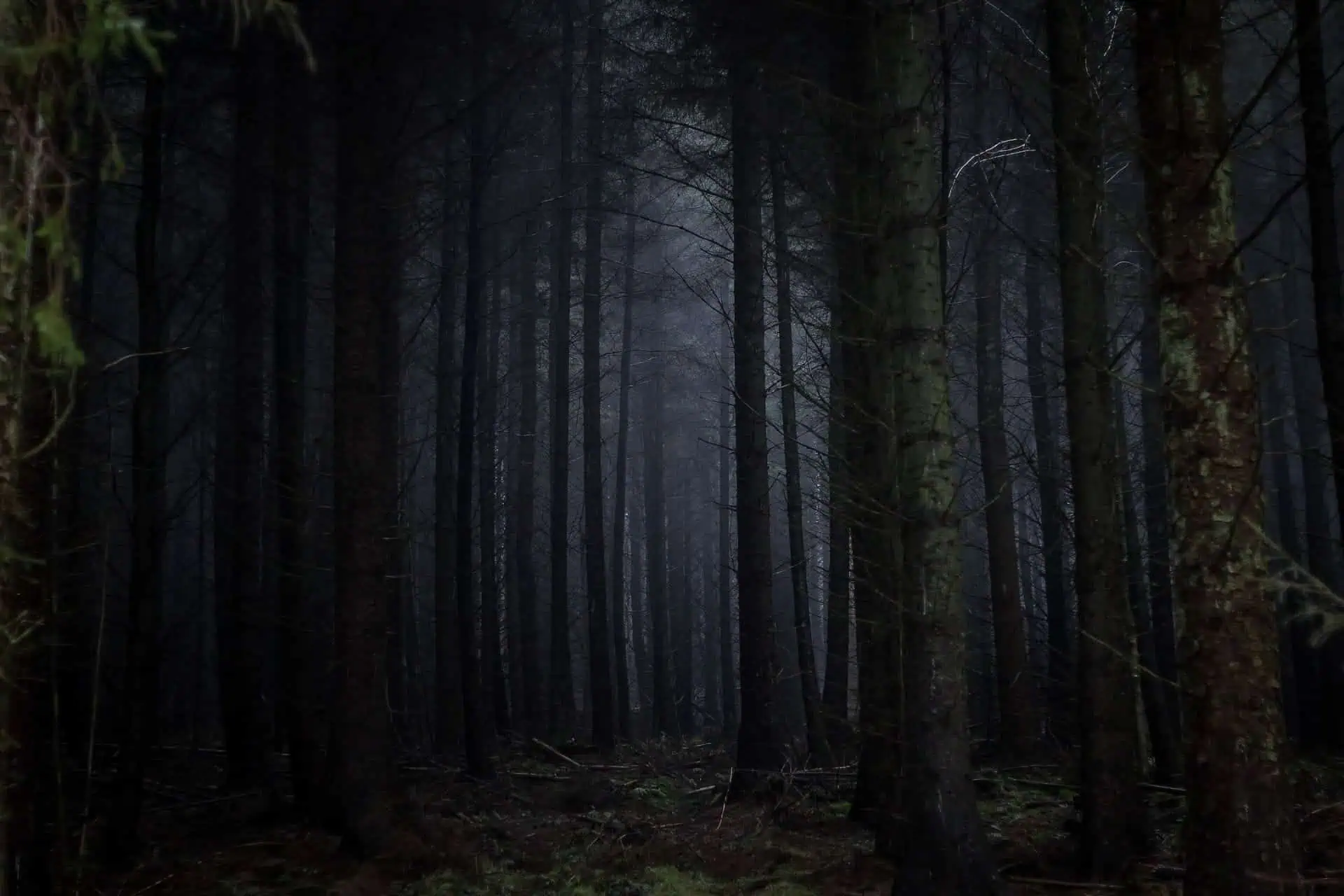
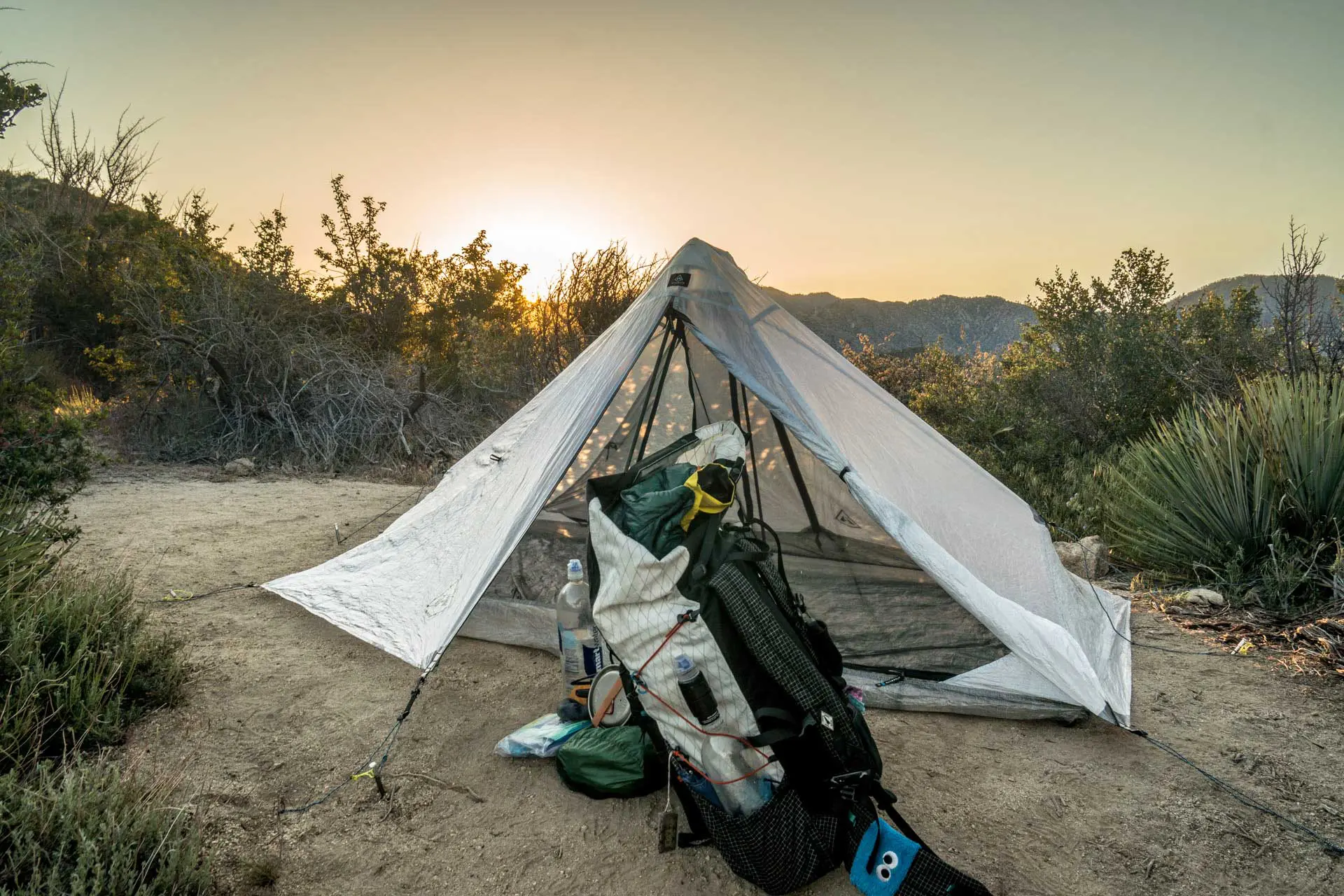
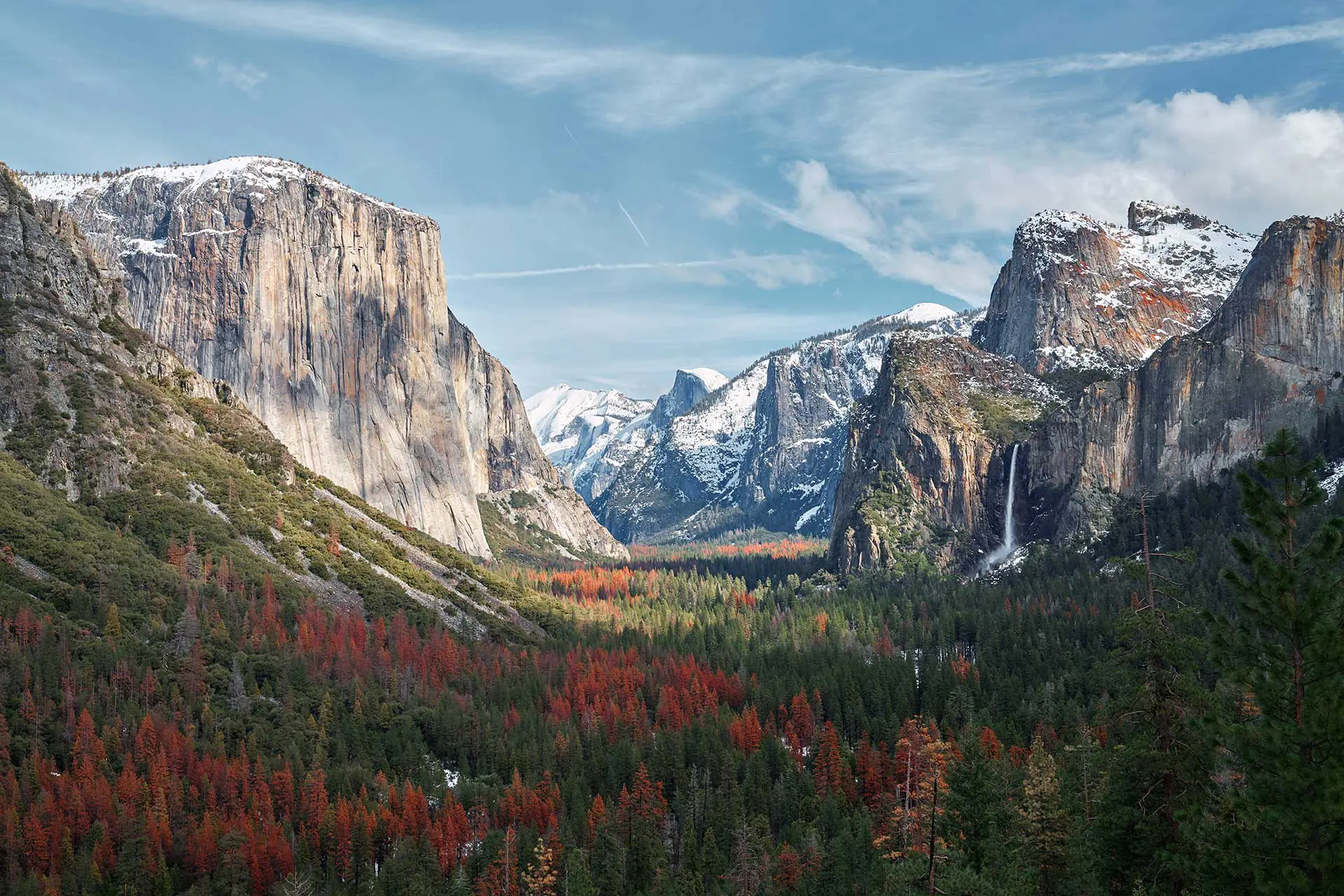

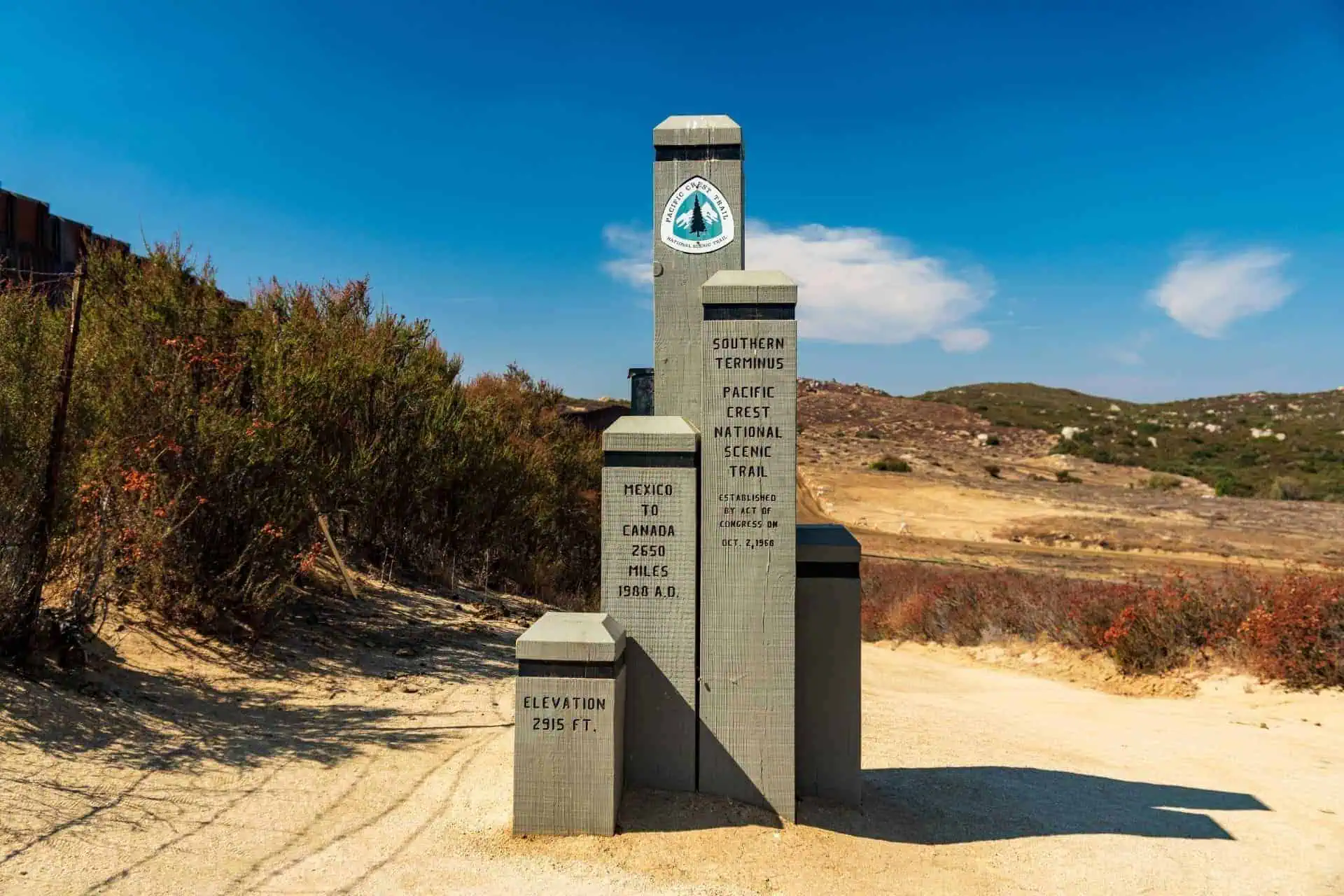
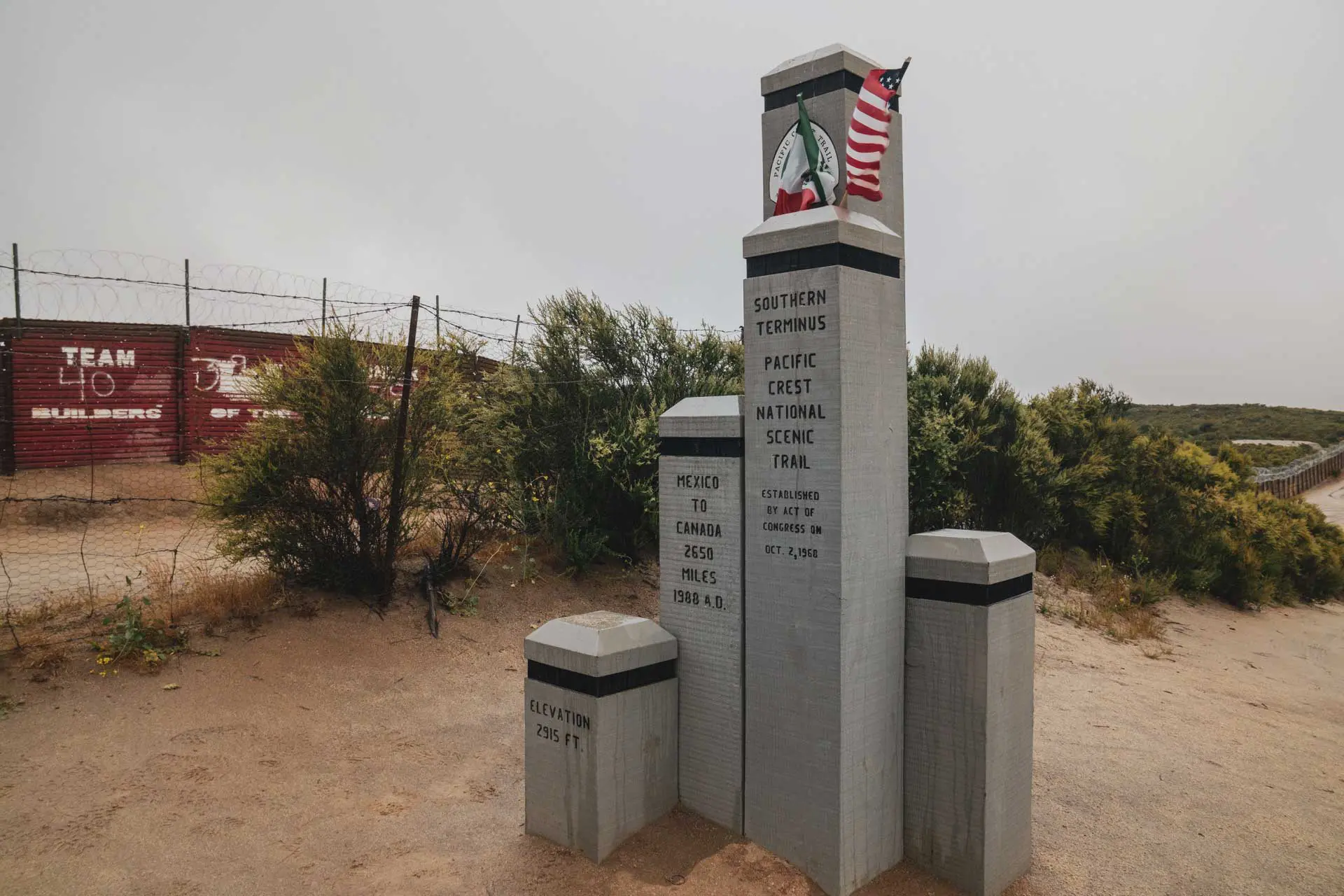
I’ve found that the sleeping bag/quilt rating doesn’t matter as much as the sleeping PAD does. You can have a 0 degree sleeping bag and still be cold if your pad’s R-value isn’t up to the task.
I think they’re both important, but for three-season backpacking along the PCT, how warm your bag is keeping you is probably more of a concern than your pad’s R-value (so long as you have a pad).
You can boost top insulation by adding clothing, which isn’t possible in the same way with what’s beneath you. I use a thin CCF pad to augment my pad because I carry it as the frame of my pack anyway, and that helps. After thousands of miles and many years in outdoor education, I figured out that when I was cold, it was usually from the ground pulling heat away, not from the top. I’ve used my 40 degree quilt in twenty degree weather (in the year’s heaviest snowstorm no less) wearing a down jacket with hood and balaclava, and I was warm except underneath.
It would be great if you would expand the survey to include clothing e.g down jacket, wind gear, shirts etc
I will see what I can do without making the survey even longer (there is definitely some grumbling when it comes to the survey length).
This is extremely well done, thank you. Very insightful.
Happy to hear it helped! This year’s will be out in a couple months when all the thru-hikers are finished.
Hi Mac,
Great survey and reporting!
I’m trying to decide on whether to buy the EE Revelation 20F but I’m getting conflicting feelings based on the survey results and analysis. It appears to be the most popular sleeping bag used, with a satisfaction of 80% however it also appears as disliked gear with a dishonorable mention (78%). Why do you think the results are like this? At first glance, it appears conflicting.
I see that most hikers recommended having a 10F bag. I also see that the EE Revelation 10F has an honorable mention for liked gear. Like Commando mentioned, I am curious as to whether gender has anything to do with this as men tend to run hotter than women.
Thanks!
Thanks for the feedback, Gary. This is definitely conflicting and I am planning to separate men’s and women’s sleeping bag preferences in this upcoming survey since I think this might be what’s creating the discrepancy.
Do you not have the data already? You know the gender of whoever filled out the survey + what they answered about their sleeping system, don’t you?
I do have the data, but since it’s a lot of work to go through it all and because nobody is starting the PCT before next year, I am simply going to include it on the 2018 survey instead of going back and updating this one.
The EE quilts are pretty universally thought to not live up to their temperature ratings. Mine also had large fill voids when I got it, though to be fair, it’s a 40 degree (I wear a down jacket as part of my sleep system).
What a great site. First I learned I’m going to die when I hike the PCT. Now I just read what shoes they’ll find me in.
Thanks for compiling all this info. What a goldmine.
Try not to die, Greg. We’ll be sad.
this is some great work! thank you for your effort, you helped me a lot.
When I do the hike, I’ll definitively take part in the survey.
Happy to hear it!
How you spend your time making charts and doing math for us is commendable, it’s nuts, but for folks like me who would just show up with a banana and this 7lb Osprey ++ all the gear, your sharing of thorough investigation is much appreciated Mac. Danke Schoen+
…and funny as heck
Don’t underestimate the usefulness of a banana.
Will have to ask EVEN MORE questions next year.
Hey, thanks … you might consider age when doing your analysis
I might.
I’m planning my first big section hike of the PCT since moving out west. I will be doing the state of Oregon from the CA border to the WA border in July this year.
I have section hiked the full AT while living on the east coast, and it was common for NOBO AT thru-hikers to start with a cold weather sleeping bag and clothing and swap them for warm weather gear soon after entering VA. Then they swap back to cold weather gear when entering NH.
Do PCT hikers do something similar or would that be inappropriate given the higher elevation?
If I’m just doing OR in July, would a 15 degree F bag still be a recommended choice, or would something like a 30 degree bag be reasonable. I know everyone is different and you can’t guarantee any temperatures on the trail, but just curious if that would change the general guidelines?
I appreciate all the information on your site, and plan on doing my new home state of OR first even though it was your least favorite section and there is still fire damage from last year.
Thanks in advance.
I haven’t personally spoken to any PCT hikers who have done this and if I were to hike the PCT now I would probably plen on using just one bag for the entirety of it. That being said, like you said, everyone is different so do what’s best for you.
Thanks for the reply. It probably isn’t worth the risk to save about a pound, but I was trying to figure out how likely it would be to encounter below 30 degree nights on the Oregon section of the PCT in July. Clearly, no one can guarantee the weather, but I was just curious since it is a common thing to do on the AT. I will check the weather sites for info, but probably will end up taking by 15 degree bag since one or two cold nights could really mess up the whole trip if I’m not prepared.
The lowest recorded temperature at Timberline Lodge in July is 29f. You will either want a bag rated to around 20f and comfortable to 30, or something rated to around freezing and be willing to wear additional clothing when needed. From the thru hikers I’ve been around the last year or two, the second solution is the most popular.
Thanks for the temp info. I would prefer not buying a new sleeping bag, and I have a 30 degree bag that is well used, so it is more like a 35, and a 15 degree bag that is lightly used.
I think I will end up using the 15 to be safe and look to save weight elsewhere.
Two reasons that Oregon is less than popular are the lack of water in the south and mosquitoes. While it doesn’t help with the former, waiting until August helps drastically with the latter. Also, knowing the water carry locations and distances beforehand can be critical knowledge.
Thanks, I would prefer August, but I only have from July 2nd to about August 5th available. I will take precautions for mosquitoes (deet, permethrin, a head net, and a bug proof tent).
I have looked over the PCT databook and there are a few long stretches between water sources, but it should be manageable.
I’m also hoping the trail closures will be open when I get there (especially through Sisters), but I don’t think I will know before I start and I can get around them if needed.
This is a fantastic resource, and I would like to thank Mac for going to all this trouble.
I through-hiked Te Araroa a couple of years ago and am planning a PCT through-hike in 2022. I’ve heard that the PCT is much easier than Te Araroa, but I still want to be fully prepared and the wealth of quantitative data here is just fantastic.
Just one comment about previous through-hikers spending less on their gear: the reason for this is that they already own gear from their previous through-hike(s).
I know I’m in this situation – all I really need is a warmer 20F quilt (through-hiked Te Araroa with a 40F Enlightened Equipment quilt but, partly based on the results in this survey, will probably switch to Feathered Friends Flicker 20 UL Wide for the PCT).
This is a fantastic resource, and I would like to thank Mac for going to all this trouble.
I through-hiked Te Araroa a couple of years ago and am planning a PCT through-hike in 2022. I’ve heard that the PCT is much easier than Te Araroa, but I still want to be fully prepared and the wealth of quantitative data here is just fantastic.
Just one comment about previous through-hikers spending less on their gear: the reason for this is that they already own gear from their earlier through-hike(s).
I know I’m in this situation – all I really need is a warmer 20F quilt (through-hiked Te Araroa with a 40F Enlightened Equipment quilt but, partly based on the results in this survey, will probably switch to Feathered Friends Flicker 20 UL Wide for the PCT).